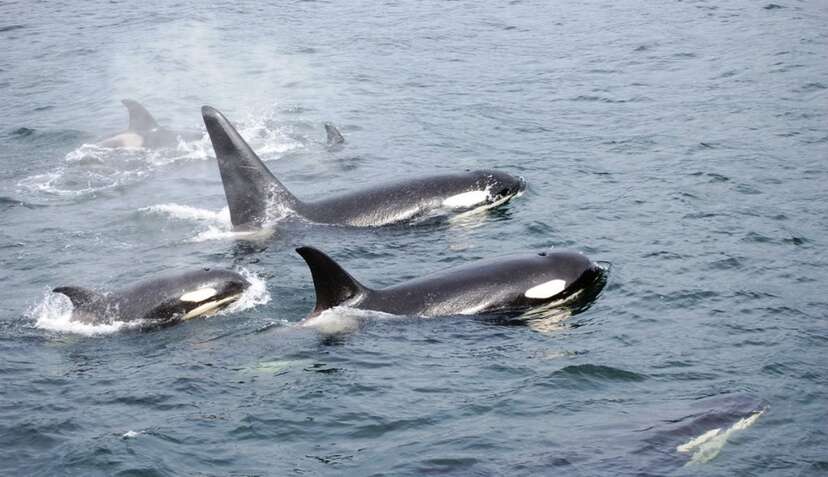5 Reasons Why SeaWorld's Orca Breeding Program Is Seriously Bad News

After speculation that a 9-year-old orca was pregnant at SeaWorld, the marine park has confirmed that the whale, named Kalia, is in fact due in December. As The Dodo reported, Kalia is pregnant at a remarkably young age. While SeaWorld has a long history of questionable breeding practices, the fact that captive breeding programs exist at all is problematic -- the more orcas bred in captivity, the more orcas that are forced to live in captivity. Here are five of the worst examples and outcomes of SeaWorld's captive breeding practices:
1. SeaWorld breeds its orcas way too young.
Kalia isn't the only orca to have been bred too young. Several other females have been bred early despite scientific studies say that the average age in the wild that female orcas begin to reproduce is 14.9 years. Here are some of the more notable instances:
- Taima gave birth to a male calf at SeaWorld Orlando in 1998 -- age 8 - Kohana, SeaWorld San Diego, had her first calf, Adán on October 12, 2010 -- age 8 - Takara gave birth to her first calf, Kohana on May 3, 2002 -- age 10 2. SeaWorld breeds orcas shown to have aggressive tendencies.
The subject of the CNN documentary "Blackfish," Tilikum is known for his aggressive tendencies. He was involved in the deaths of three people (two trainers and one trespasser) at SeaWorld -- including Dawn Brancheau in 2010.
Despite all this, Tilikum has been an incredibly prolific breeder, siring a whopping 21 calves -- all of which could carry his genetically predisposed aggressive tendencies. This practice has been criticized heavily by animal advocates, who say that a whale with a history of violence should not be bred.
3. SeaWorld artificially inseminates whales to keep them continuously breeding.
After wild orca capture became illegal, SeaWorld had to resort to artificial insemination to keep its orcas producing offspring. In order to do this, male "stud" whales are trained to present their genitals to trainers who then proceed to capture the ejaculate. Trainers then use a tube with a camera attached to insert it into the female. While not drastically harmful to the animals, this is far from natural behavior and often doesn't result in pregnancy.
This graphic video gives a glimpse of what the artificial breeding process involves.
4. SeaWorld's orcas are inbred.
Perhaps the most problematic facet of SeaWorld's breeding program is the matching of genetically-close individuals like Nalani, a female orca at SeaWorld Orlando, who is the offspring of a 37-year-old female named Katina and her own son, a male named Taku. So Taku is both father and half brother to Nalani. Another example is Kohana, a female born at SeaWorld San Diego in 2002, who was moved to the marine park Loro Parque in Spain, where she was bred with Keto, the brother of her mother. She gave birth to Adan in 2010, but refused to raise him, so staff had to bottle-feed him.
5. SeaWorld's breeding program results in a high number of stillbirths.
Orcas are notoriously difficult breeders -- even more so in captivity. In fact, until the whale Kalina was born in September 1985, no captive-born orca was able to survive more than a few days. Before Kalina, the 10 orcas born in captivity were all stillborn. In 2010, a 21-year-old mother orca named Taima died while giving birth to a stillborn baby at SeaWorld Orlando.
This family tree, created by Whale and Dolphin Conservation, gives a glimpse of how often captive orca babies have been stillborn in the recent past.
SeaWorld and marine parks profit off keeping orcas and other marine animals in captivity -- despite evidence that captivity not only induces unnatural behaviors in whales, but also endangers trainers. Join us in pledging never to visit SeaWorld or other marine parks until they empty their orca tanks.